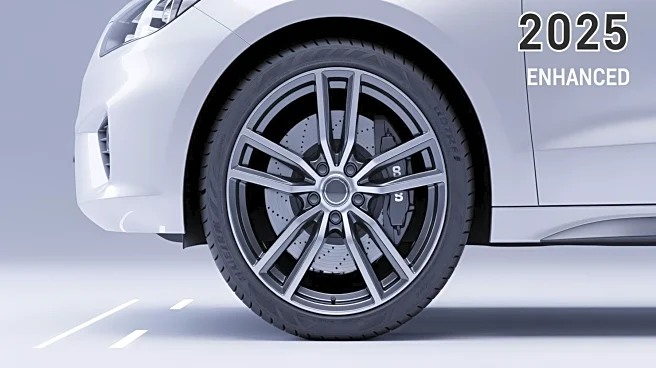What's Happening?
The Isuzu D-Max pickup truck has received several enhancements for the 2025 model year to maintain its competitive edge in the market. The vehicle, which has been a staple since its introduction in 2021, now features a slightly redesigned front grille,
updated multimedia screens, and a suite of advanced driver-assist systems. These include adaptive cruise control, improved auto emergency braking, blind spot monitoring, and lane departure warning. The D-Max is available with a 1.9-litre diesel engine and offers a towing capacity of 3.5 tonnes and a maximum payload of 1,250 kg. It comes with a 125,000-mile/five-year warranty and five years of UK and European roadside assistance. The D-Max is sold through 90 dealers nationwide, with 80% of sales being double cabs.
Why It's Important?
The enhancements to the Isuzu D-Max are significant as they aim to bolster the vehicle's appeal in a competitive market segment. The introduction of advanced driver-assist systems aligns with industry trends towards increased vehicle safety and automation. These updates could potentially attract a broader customer base, including those prioritizing safety and technology in their vehicle choices. The D-Max's robust towing capacity and payload make it a practical choice for industries reliant on heavy-duty vehicles, such as construction and agriculture. The vehicle's reliability and comprehensive warranty further enhance its attractiveness to consumers seeking long-term value.
What's Next?
Looking ahead, Isuzu plans to introduce an electric version of the D-Max in 2026, which could significantly impact its market position as the automotive industry shifts towards electrification. This move may attract environmentally conscious consumers and align with global trends towards reducing carbon emissions. The continued evolution of the D-Max's features and capabilities will likely influence its competitiveness and market share in the coming years.
Beyond the Headlines
The D-Max's enhancements reflect broader industry trends towards integrating technology and sustainability in vehicle design. The planned electric version underscores the automotive industry's shift towards greener alternatives, which could have long-term implications for environmental policies and consumer preferences. Additionally, the focus on advanced safety features highlights the growing importance of vehicle safety in consumer decision-making processes.














